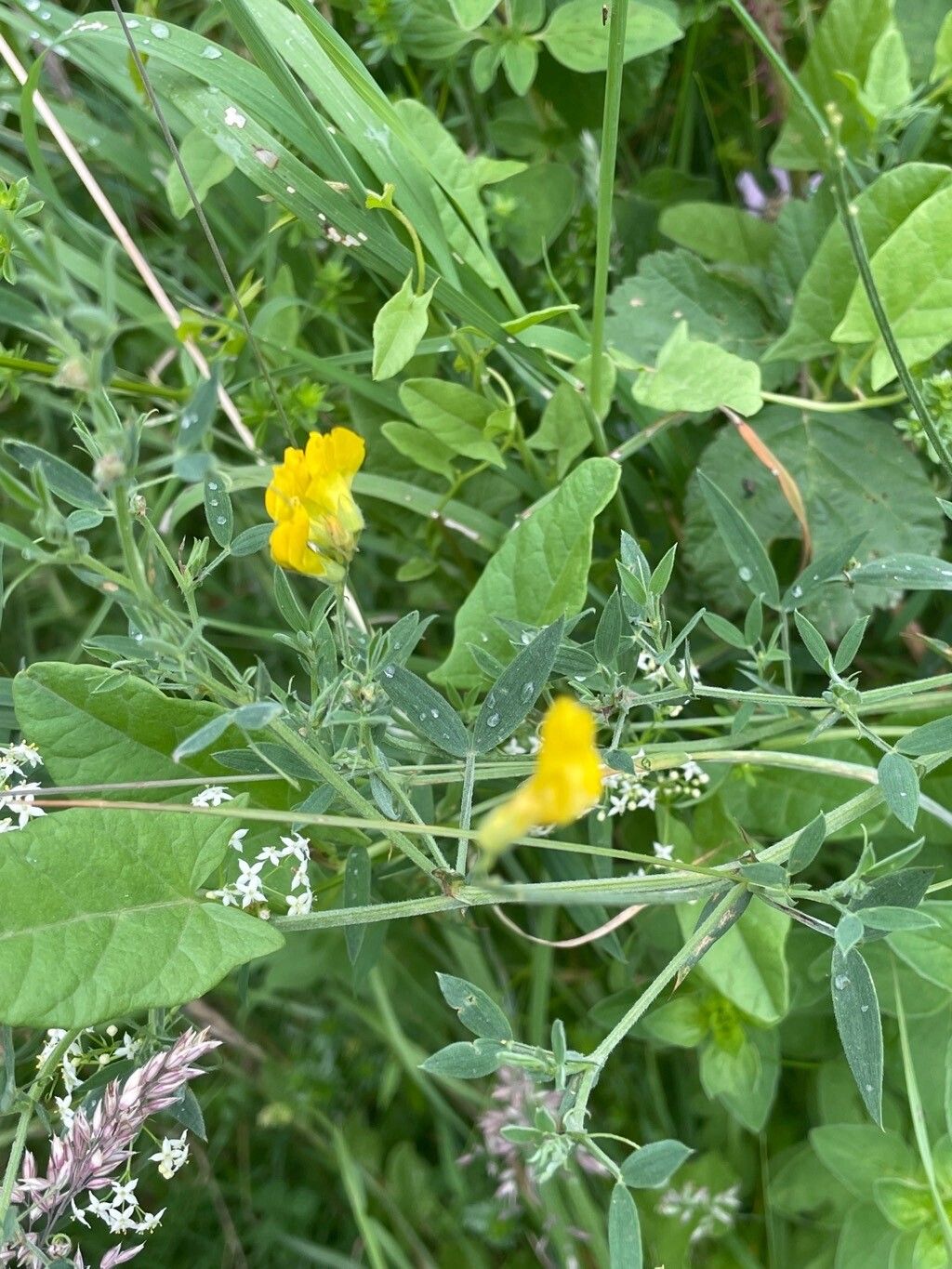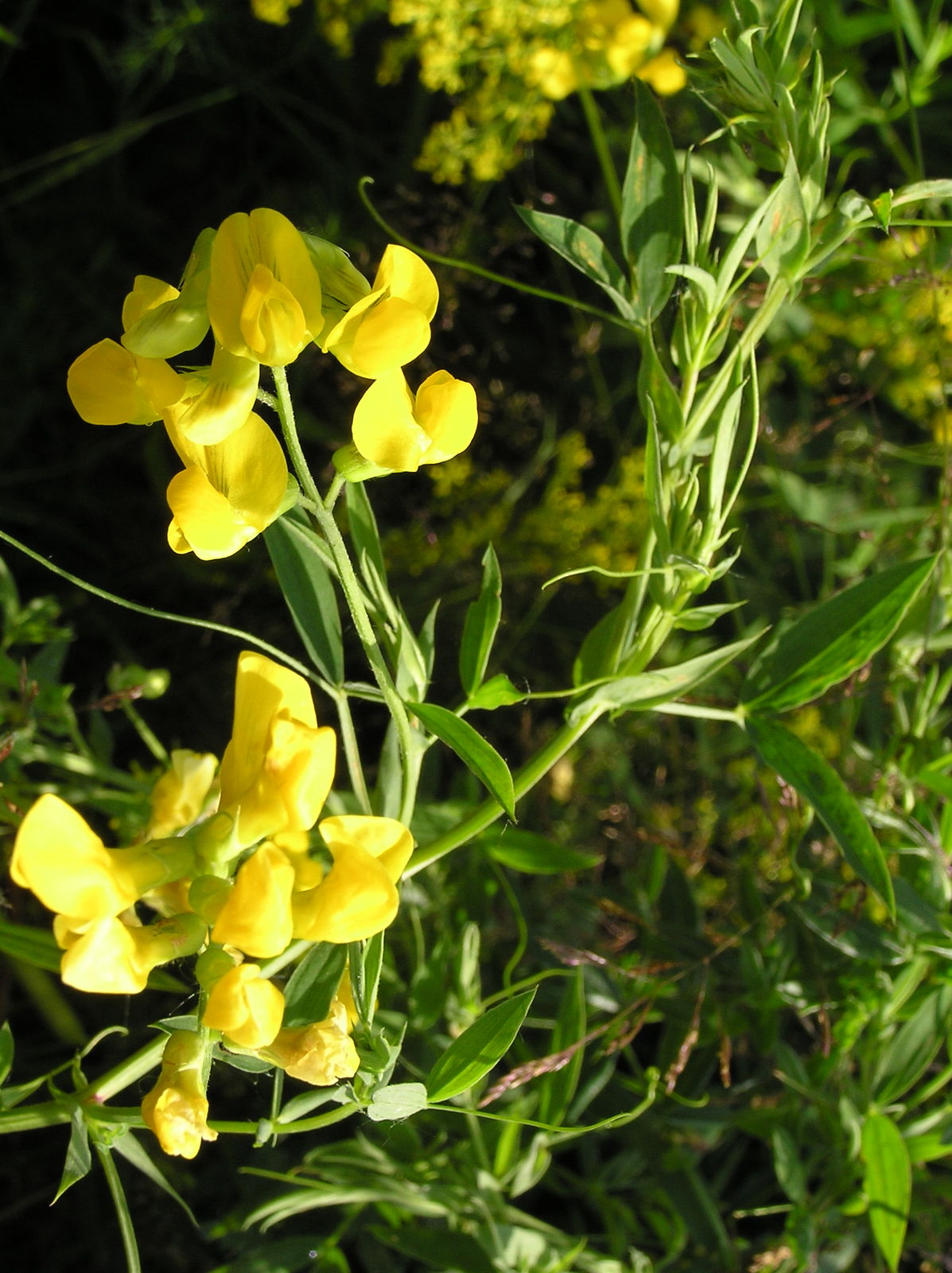Meadow Vetchling
lathyrus pratensis
Also known as: ["Meadow Pea","Hay Vetchling"]
Overview
A perennial herbaceous plant in the pea family, known for its bright yellow flowers and climbing habit.
Benefits & Perks
["wildlife attractant (bees, butterflies, birds)","fragrant flowers","drought tolerant"]
Botanical Classification
| Phylum: | Magnoliophyta |
| Class: | Magnoliopsida |
| Order: | Fabales |
| Family: | Fabaceae |
| Genus: | Lathyrus |
| Botanical Name: | Lathyrus pratensis |
Plant Characteristics
Basic Information
- Category: Flowers
- Suitable Location: garden border, mixed perennial bed, or container in a sheltered spot
- Suitable For:
- Is Weed: No
- Allergenicity: low
Environmental Needs
- Climate: {"temperatureRange":"0–30°C"}
- Hardiness: {"zones":"4–8"}
- Misting: rarely required, only if ambient humidity is very low
- Drainage: Moderate to fast-draining; avoid waterlogged conditions.
- Soil Type: Well-draining, loamy soil with added organic matter; can tolerate slightly sandy or clay soils if amended.
Maintenance Level
- Maintenance Level: moderate
- Toughness Level: moderate
- Pruning Frequency: Light pruning can be done anytime; major pruning in late winter or early spring before new growth begins.
- Pruning Intensity: Light to moderate; avoid heavy pruning unless necessary to control size or shape.
Care Details
Ideal Sunlight Coverage:
Full sun to partial shade (6–8 hours of direct sunlight daily); adjust for intense summer sun.
Sunlight Tolerance Tips:
Acclimate plants gradually to intense sunlight; provide shade during peak afternoon hours in hot climates; ensure proper ventilation if grown indoors.
Care Requirements
Care Difficulty
easymoderate
Sunlight
full sun to partial shade
Rotate plants for even light exposure; use sheer curtains to filter harsh sunlight; avoid placing near heat sources.
Watering
every 7–10 days during active growth, reduce in winter
Water thoroughly but allow soil to dry between waterings; avoid overhead watering to prevent fungal issues.
Soil
well-drained, loamy soil with moderate organic content
pH: Slightly acidic to neutral (pH 6.0–7.0).
Ensure pots have drainage holes; avoid compacted soil; use mulch to retain moisture.
Temperature
Prefers cool to moderate temperatures (60–75°F or 15–24°C); tolerates cooler nights.
Avoid sudden temperature fluctuations; maintain consistent humidity; protect from drafts.
Fertilizing
every 4–6 weeks during spring and summer
Apply fertilizer after watering to prevent root burn; stop fertilizing when flowering begins to avoid excessive foliage growth.
Propagation
Methods
Stem cuttings or division; seeds can also be sown in early spring.
Step-by-Step Propagation Guide
- Take a 4–6 inch cutting.
- Remove lower leaves.
- Dip in rooting hormone (optional).
- Plant in medium.
- Keep moist and warm.
Best Time: Spring or early summer when the plant is actively growing.
Environment
Warm, humid environment with indirect light; maintain consistent moisture.
Medium
Well-draining potting mix with perlite or sand; can also root in water initially.
Hormone
Rooting hormone is optional but recommended for faster rooting.
Timeline
Roots typically form in 2–4 weeks; new growth may appear in 6–8 weeks.
Tools Needed
Pruning shears, rooting hormone, small pots, well-draining medium.
Quick Tips
Use healthy, non-flowering stems; maintain high humidity with a plastic cover; avoid direct sunlight.
Pruning & Repotting
Pruning Guide
Method
Pinch back tips to encourage branching; cut stems just above a leaf node or bud.
Pruning Plan
Prune to maintain shape, encourage bushier growth, and remove dead or diseased stems.
Tools
Pruning shears, sharp scissors, gloves.
Checklist
Use clean tools; make clean cuts; remove dead or damaged growth; shape as desired.
Repotting Guide
Best Season
Early spring before active growth begins.
Pot Size
Increase pot size by 1–2 inches in diameter; ensure good drainage holes.
Method
Remove plant gently; trim any circling roots; place in a slightly larger pot with fresh, well-draining soil; water thoroughly.
Suggestions
Repot every 2–3 years or when roots fill the pot; beneficial for container-grown plants to refresh soil and provide space.
Checklist
Choose appropriate pot size; prepare fresh soil mix; handle roots carefully; water after repotting.
Advanced Care Tips
Watering Mastery
Watering Checklist
Check soil moisture; water deeply; ensure drainage; avoid wetting leaves.
How to Apply Water Properly
Water at the base of the plant, ensuring moisture reaches the root zone; water early in the day to minimize evaporation and fungal growth.
Watering Schedule Tips
Water deeply once the top inch of soil is dry; reduce frequency in winter to prevent root rot.
Soil Improvement
Add compost or well-rotted manure to enhance fertility and structure; incorporate perlite or sand for better drainage.
Temperature Stress Management
Signs of Temperature Issues
Wilting, yellowing leaves, or stunted growth in extreme heat; leaf drop or browning in cold stress.
Cold Stress
Slows growth and can cause leaf damage or dieback in temperatures below 50°F (10°C).
Solution: Provide frost protection in cold climates; move potted plants indoors or to a sheltered location.
Hot Stress
Leaves may scorch, wilt, or drop; flowering may be reduced in excessive heat.
Solution: Provide shade during peak heat; increase watering frequency; use mulch to retain soil moisture.
Fertilizing Guide
Fertilizing Checklist
Use balanced fertilizer; dilute properly; apply during active growth; avoid winter feeding.
Fertilizing Method
Use a balanced liquid fertilizer diluted to half strength every 4–6 weeks during the growing season (spring to early summer); avoid fertilizing in winter.
Common Problems & Solutions
Toxicity Warning
Cats
Slightly ToxicCats are also susceptible to the neurotoxic effects of Lathyrus pratensis if they ingest significant amounts of seeds or pods. The compounds can disrupt normal neurological function, leading to motor impairment.
⚠️ Symptoms:
🌿 Toxic Parts:
⚡ Toxic If:
if eaten in large quantities
Dogs
Slightly ToxicSimilar to humans, dogs may experience mild neurological effects if they consume large amounts of Lathyrus pratensis seeds or pods. The neurotoxic compounds can lead to muscle weakness and coordination issues.
⚠️ Symptoms:
🌿 Toxic Parts:
⚡ Toxic If:
if eaten in large quantities
Humans
Slightly ToxicLathyrus pratensis contains small amounts of neurotoxic amino acids that can cause lathyrism, a condition affecting the nervous system, when consumed in excessive amounts over time. The effects are generally mild unless large quantities are ingested regularly.
⚠️ Symptoms:
🌿 Toxic Parts:
⚡ Toxic If:
if eaten in large quantities
Frequently Asked Questions
Q: Is Lathyrus pratensis toxic to pets?
A: It is mildly toxic to dogs and cats, so ingestion should be avoided.
Q: Does Meadow Vetchling attract wildlife?
A: Yes, it attracts bees, butterflies, and birds due to its nectar-rich flowers.
Q: How easy is it to grow Meadow Vetchling?
A: It is relatively easy to grow, requiring moderate care and maintenance.
Quick Reference
| Family: | Fabaceae |
| Care: | easy |
| Light: | full sun to partial shade |
| Water: | every 7–10 days during activ |
Get Expert Care Tips
Download the Plantious app for personalized care reminders and plant identification!
Google Play App Store








